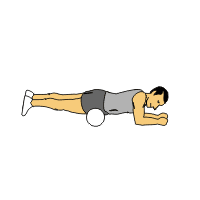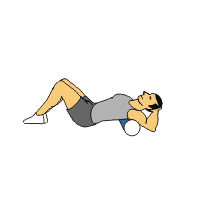AFTER EXERCISE REST - Why Rest Days Improve Sports PerformanceFrom
About.com by
Elizabeth Quinn --
Building recovery time into any training program is important because this is the time that the body adapts to the stress of exercise and the real training effect takes place. Recovery also allows the body to replenish energy stores and repair damaged tissues. Exercise or any other physical work causes changes in the body such as muscle tissue breakdown and the depletion of energy stores (muscle glycogen) as well as fluid loss.
Recovery time allows these stores to be replenished and allows tissue repair to occur. Without sufficient time to repair and replenish, the body will continue to breakdown from intensive exercise. Symptoms of
overtraining often occur from a lack of recovery time. Signs of overtraining include a feeling of general malaise, staleness, depression, decreased sports performance and increased risk of injury, among others.
Short and Long-Term Recovery
Keep in mind that there are two categories of recovery. There is immediate (short-term) recovery from a particularly intense training session or event, and there is the long-term recovery that needs to be build into a year-round training schedule. Both are important for optimal sports performance.
Short-term recovery, sometimes called
active recovery occurs in the hours immediately after intense exercise. Active recovery refers to engaging in low-intensity exercise after workouts during both the cool-down phase immediately after a hard effort or workout as well as during the days following the workout. Both types of active recovery are linked to performance benefits.
Another major focus of recovery immediately following exercise has to do with replenishing energy stores and fluids lost during exercise and optimizing protein synthesis (the process of increasing the protein content of muscle cells, preventing muscle breakdown and increasing muscle size) by eating the right foods in
the post-exercise meal.
This is also the time for soft tissue (muscles, tendons, ligaments) repair and the removal of chemicals that build up as a result of cell activity during exercise.
Long-term recovery techniques refer to those that are built in to a seasonal training program. Most well-designed training schedules will include recovery days and or weeks that are built into an annual training schedule. This is also the reason athletes and coaches change their training program throughout the year, add
crosstraining, modify workouts types, and make changes in intensity, time, distance and all the other training variables.
Adaptation to Exercise
The Principle of Adaptation states that when we undergo the stress of physical exercise, our body adapts and becomes more efficient. It’s just like learning any new skill; at first it’s difficult, but over time it becomes second-nature. Once you adapt to a given stress, you require additional stress to continue to make progress.
There are limits to how much stress the body can tolerate before it breaks down and risks injury. Doing too much work too quickly will result in injury or muscle damage, but doing too little, too slowly will not result in any improvement. This is why personal trainers set up specific training programs that increase time and intensity at a planned rate and allow rest days throughout the program.
Sleep Deprivation Can Hinder Sports PerformanceIn general, one or two nights of poor or little sleep won't have much impact on performance, but consistently getting inadequate sleep can result in subtle changes in hormone levels, particularly those related to stress, muscle recovery and mood. While no one completely understands the complexities of sleep, some research indicates that sleep deprivation can lead to increased levels of cortisol (a stress hormone), decreased activity of human growth hormone (which is active during tissue repair), and decreased
glycogen synthesis.
Other studies link sleep deprivation with decreased
aerobic endurance and increased
ratings of perceived exertion.
Balance Exercise with Rest and Recovery.
It is this alternation of adaptation and recovery that takes the athlete to a higher level of fitness. High-level athletes need to realize that the greater the training intensity and effort, the greater the need for planned recovery. Monitoring your workouts with
a training log, and paying attention to how your body feels and how motivated you are is extremely helpful in determining your recovery needs and modifying your training program accordingly.




 There are a lot of pro and elite athletes that swear by this method for recovery............ but if you're like me (i.e. NOT A PRO or ELITE athlete) then submerging yourself in freezing cold ice water isn't a very practical or appealing method.
There are a lot of pro and elite athletes that swear by this method for recovery............ but if you're like me (i.e. NOT A PRO or ELITE athlete) then submerging yourself in freezing cold ice water isn't a very practical or appealing method. 














